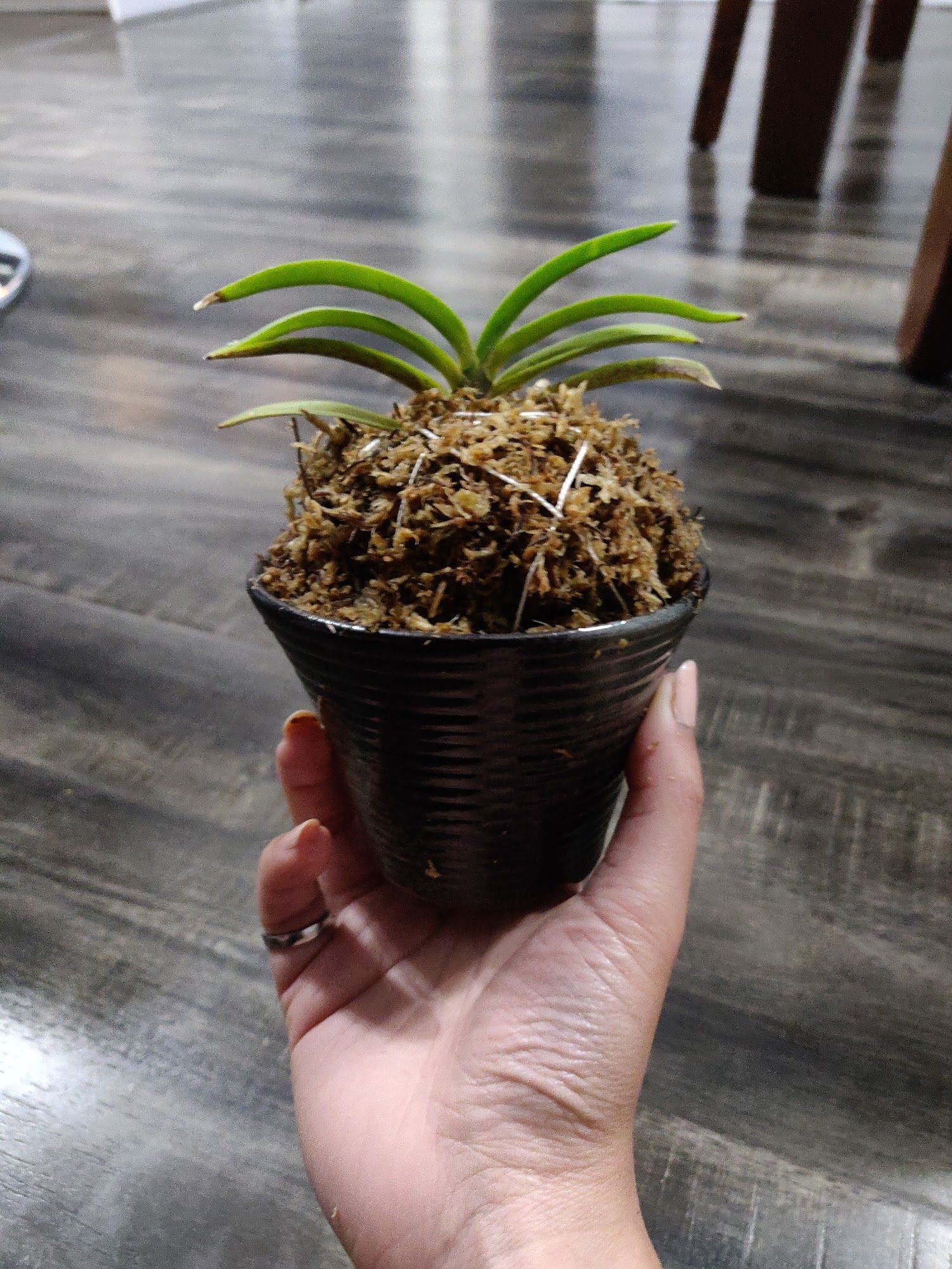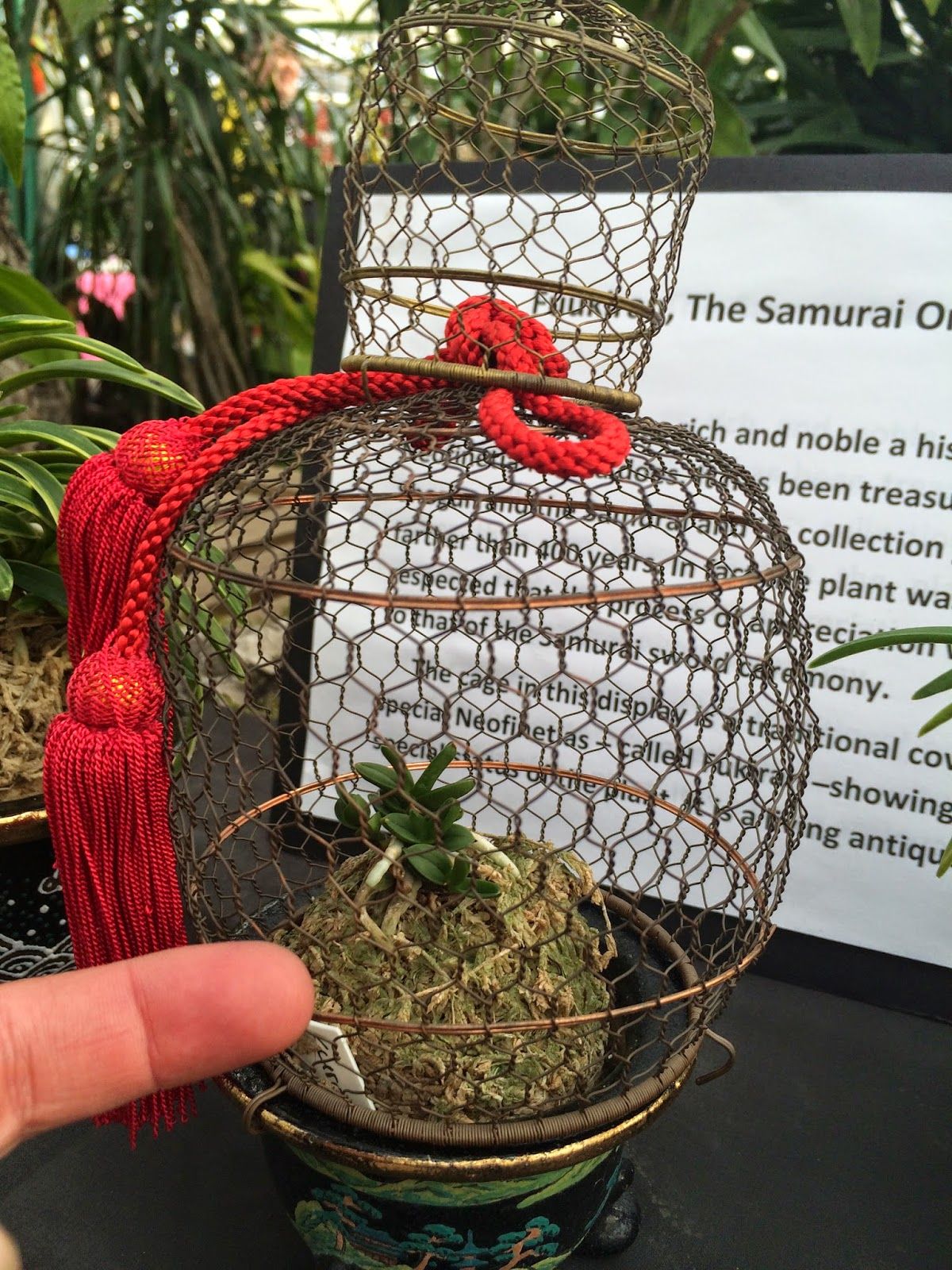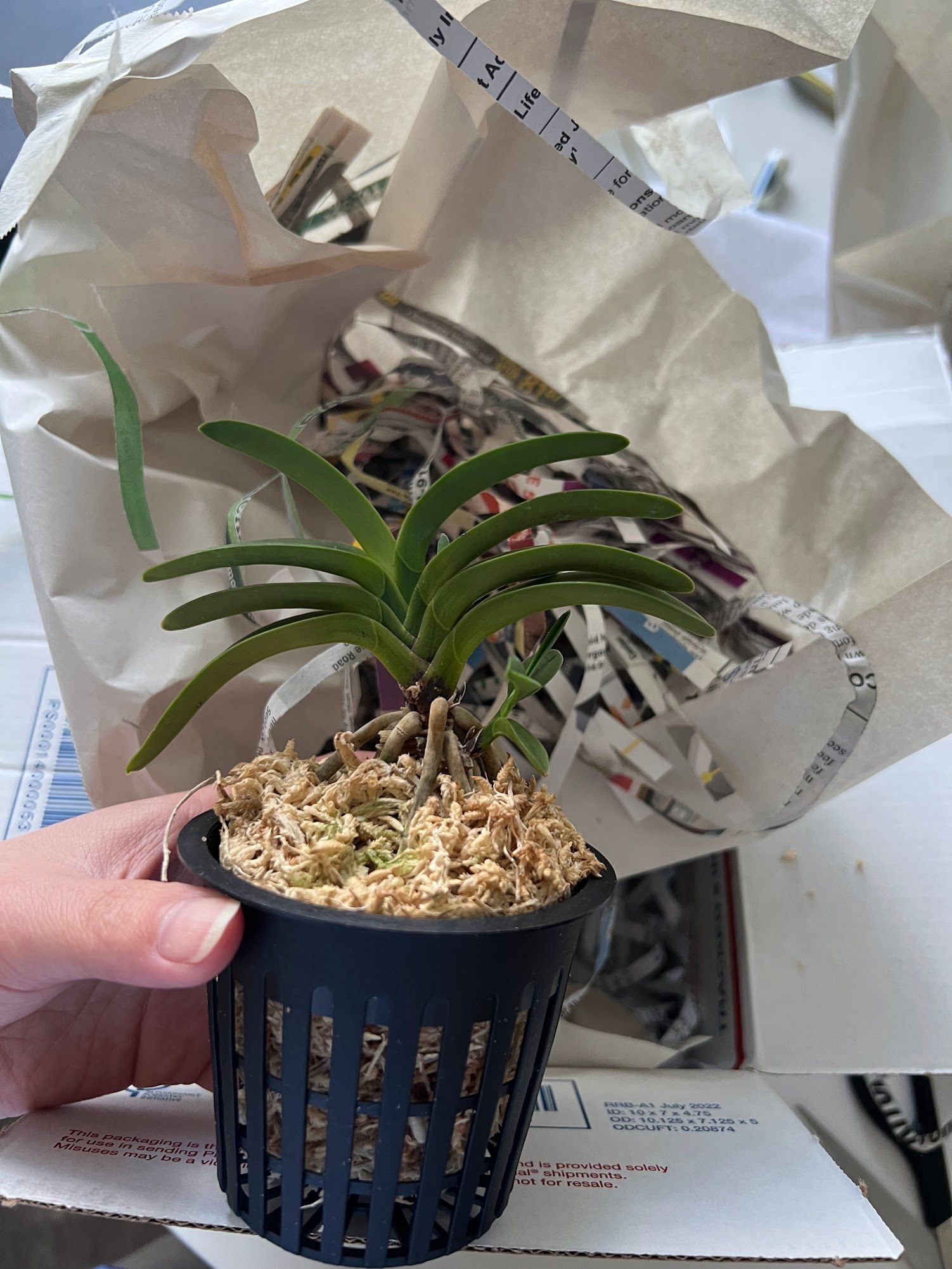Neofinetia Falcata

The first time I bought a Neofinetia falcata, I was browsing for other orchids at Crystal Star Nursery near Toronto. I saw a beautiful fan-like orchid displayed neatly in a small fluted pot that reminded me of a bonsai. Because it was so aesthetically pleasing, I impulsively bought it along with some other hoyas and orchids.
The plant was only labelled as "Neofinetia falcata". I kept it in the same condition as it was sold - in a moss mound in a small fluted pot. But it never grew or flowered, probably because it didn’t have enough moisture to grow.

When I was in the middle of moving, I decided to try selling it. Someone asked about the type of Neofinetia it was and I found myself at a loss. This question had me researching deeper, and to my amazement, I stumbled upon an entire community centered around collecting Neofinetia falcata. Not only that, but I also found a rich history surrounding its collection and cultivation.
I joined the Facebook group Neofinetia · 富貴蘭 · 풍란 | Facebook
There are a lot of resources on Neofinetia in that group, and the members post pictures of their plants.
According to the ‘Fūkiran History’ by Ikuo Nishiguchi, fūran (the first Japanese name for Neofinetia falcata) first appeared in written documentation in the Kanbun era (1661-1672) under different names such as keiran 桂蘭 or chōran 吊蘭, complete with illustrations and explanations. In the middle of the Edo period, they gained popularity and were cultivated among the wealthy. They were renamed to fūkiran. Fūki meaning wealth and rank.
It became most popular during the reign of the 11th Tokugawa shōgun, Ienari (1787–1837). It was so popular and valuable that sometimes when one inspected a fūkiran specimen, a piece of paper would be held in his mouth to avoid breathing on the plant. Fūkiran grown in decorative pots were also often covered with gold or silver wire cages to prevent damage by rodents and other small animals.

When it was time for me to get new plants after settling in my new apartment, I bought two orchids from Helen Yu on Etsy.



It was only after receiving the plants that I realized fūkiran are formally registered and ranked in Japan.
The Fūkiran Meikan is a directory published annually by the Japan Fūkiran Society (Nihon Fūkiran Kai, 日本富貴蘭会 ). All of the varieties of Neofinetia falcata registered in the Japan Fūkiran Society and their rank are shown in the Meikan , of which model is the Sumō ranking chart (Banzuke-hyō, 番付表). Also for the other classical horticultural plants, such as Chōseiran (長生蘭 , Den. moniliforme), Omoto (万年青 , Rohdea japonica), Saishin (細辛 , Asarum sieboldii), and Matsubaran (松葉蘭 , Psilotum nudum), the Meikan of those plants is being published since long ago by the respective societies and associations.
The ones I have aren’t ranked, but it is an active society and may appear on the Meikan one day. Though many say that there are very strict rules to follow to be registered. Since two of the criteria are rarity and demand, highly ranked fūkiran are very expensive.
The english translated Fūkiran Meikan for 2023 can be found through this link:
I hope to collect only a few fūkiran that I really enjoy, regardless of their rank and price. I simply want to experience growing them and following the community.